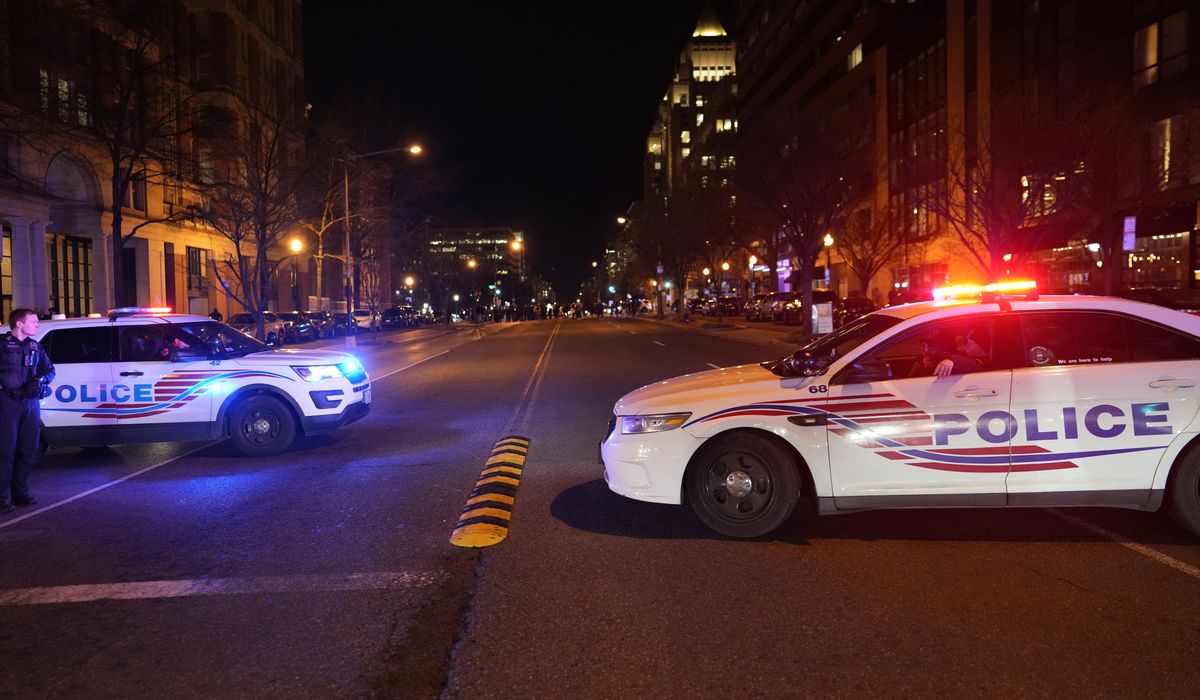


A key D.C. Council member voiced her support Wednesday for a new bill aiming to address repeat juvenile offenders in the city, but some local activists don’t think the proposal gets to the heart of why so many District youth turn to crime.
Council Member Brooke Pinto, the Ward 2 Democrat and chair of the city’s public safety committee, said she welcomes proposed new legislation from Attorney General Brian Schwalb that seeks to cut down on the staggering recidivism rate for teens and pre-teens who spend time at the city’s juvenile detention facility.
Mr. Schwalb cited a 2022 study that showed 93% of children who were locked up at the Department of Youth Rehabilitative Services wound up being rearrested. Almost half of those who were handcuffed again were convicted of a new crime, the research said.
The study prompted Mr. Schwalb on Tuesday to put forward the “ROAD Act” — or the Recidivism Reduction, Oversight, and Accountability for DYRS Act. The bill would require the facility to change its supervision and intervention practices, mandate independent oversight of DYRS and would empower D.C. courts to intervene if facility staffers are not providing proper services for young inmates.
Ms. Pinto said in a statement she was “distressed” that the juveniles behind bars aren’t being rehabilitated and is looking forward to improving the facility by working with Mr. Schwalb, DYRS staff and Mayor Muriel Bowser, whose administration runs the Northeast detention center.
“The outcomes for our youth are critical to the District’s goals to improve safety, and we must provide better supports and opportunities for rehabilitation to ensure that justice-involved youth have what they need to safely thrive in our communities when they come home,” Ms. Pinto said in a statement to The Washington Times.
Council member Trayon White, Ward 8 Democrat, has oversight of DYRS as chairman of the city’s Committee on Recreation, Libraries and Youth Affairs.
Mr. White could not be reached for comment on whether the bill will get a hearing.
The attorney general’s bill comes after a number of fights, arrests and positive drug tests were reported at the facility this month.
At least three young inmates were hospitalized after 14 brawls in May, according to local NBC affiliate WRC-TV.
Eight arrests were made in two of the melees at the detention center this month, the station reported.
Three juveniles also tested positive for opioids in recent weeks, with one detainee needing NARCAN to be administered.
Juvenile crime in the District became a hot topic during last year’s violent crime wave.
Underage offenders were major contributors to the record-setting levels of carjackings in 2023, and teens were frequently tied to ambush-style street robberies in which groups of juveniles were hopping out of stolen cars and mugging pedestrians.
Teens have been tied to high-profile crimes this year, too.
A 16-year-old boy was charged with gunning down a 14-year-old boy at the Brookland Metro Station last month. And three girls between the ages of 12 and 13 were arrested in March after they were accused of beating a disabled man to death in Northwest last year.
But some youth activists, such Rhozier “Roach” Brown, said recidivism will only go down when city leaders give the young inmates what they actually need.
Brown, an ex-convict who later worked as an aide for former mayor Marion Barry, said he’s visited DYRS with members of anti-violence group Communities Respecting Everyone’s Will to Survive.
The juveniles there are more interested in how to provide for themselves than anything else, according to Brown. He claimed that the facility doesn’t have the resources to do that.
“These kids need everything. They don’t have no hope,” Mr. Brown told The Times. “You tell somebody that’s 13 or 14 that they gotta wait until they’re 21 years old before they can get some money.”
DYRS does have an Achievement Center, where juvenile inmates can join programs on work readiness and job placement along with taking courses on vocational skills training.
Brown said many of the children who resort to crime are looking for a quick way to fix the fact that they’re homeless and hungry. Once they get a hold of a gun, Brown said they “feel powerful, and that power goes to their head,” causing them to behave violently.
A group of D.C. pediatricians on Tuesday offered their “prescription” for the District’s youth crime problem.
That included consolidating primary care, mental health care and social work services to be all in one place, addressing the chronic absenteeism at District schools and creating safe community spaces and offering more nutritious foods for legal minors.
“By focusing on strength-based, preventive strategies, Rx4DC aims to address the underlying social, economic, and environmental factors that give rise to violence,” The D.C. Chapter of the American Academy of Pediatrics said in a release. “This proactive approach is essential to creating safer, healthier communities for all District children and their families, aligning with our commitment to advocate for the well-being and future of every child.”
• Matt Delaney can be reached at mdelaney@washingtontimes.com.
